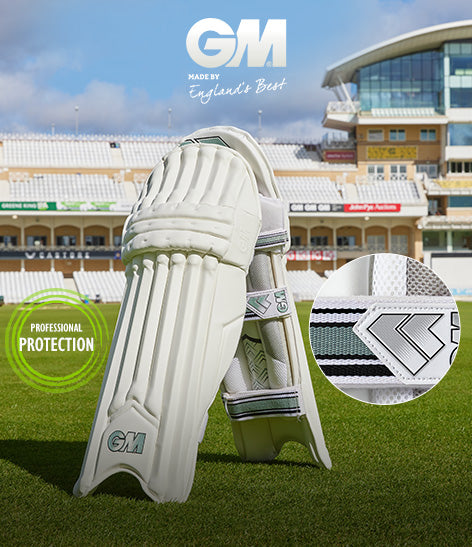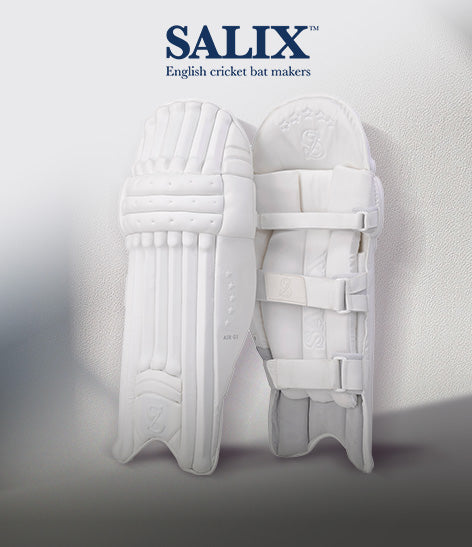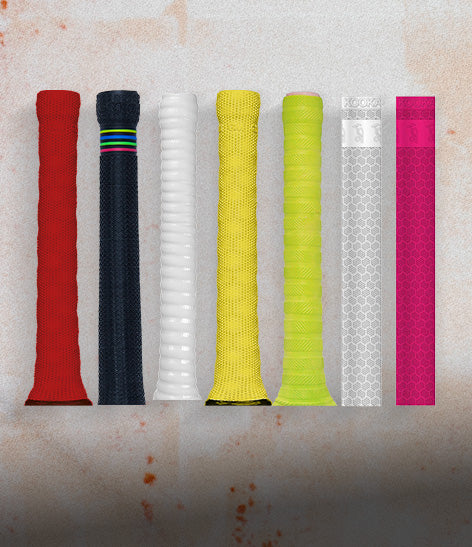Caring for your Cricket Bat
How to look after your new cricket bat
Whether you have bought a new bat for yourself or someone else we understand the excitement of getting to use it for the first time, BUT we also understand that wood is a natural, living material that is prone to cracks, dentswhich can lead to disappointment.
Our Bat Care Essentials guide is designed to offer you some clear Do’s & Don’ts when it comes to giving your bat the best possible preparation so it can get to it’s best & stay at its best for as long as possible.
Unfortunately, there will come a day when your bat breaks however, we hope that the tips & tricks in this guide will keep you bat in a playable condition for as long as possible.
Knocking in your cricket bat:
DO: With either a bat mallet or a ball and sock, knock-in the cricket bat for a minimum of six hours with greater force being progressively applied throughout.
Start lightly and pay particular attention to the edges of the face of the bat. Do not knock in the edges from the side or back of the bat – concentrate on the face only.
DO NOT: Make sure you do not use your new cricket bat straight away in a game or practice session even if it is a pre-prepared cricket bat, as all bats will needs some knocking in or throwdowns against good quality old balls before full intensity practice or match play.
If you do not knock it in properly then the cricket bat will have a high risk of breaking.
Knocking in process:
1. Knock in with a bat mallet for approximately six hours, gradually increasing force from light to medium (don’t give it too much welly!).
2. After step 1, Use it to play defensive shots in the nets against slow-to-medium paced bowlers using good quality old balls. If you notice prominent seam marks return to mallet for an hour.
3. Start to play more attacking strokes in the netsusing good quality old balls.If you notice prominent seam marks return to mallet for an hour.
4. Use the bat in a match situation when you are confident that is has been fully conditioned , which also includes undertaking the processes below).
Why do I need to knock my bat in?
Knocking your cricket bat in with either a mallet or an old ball in a sock makes the fibres of the willow blade compress and bind more firmly, to help protect your bat from the impact of a cricket ball.
The edges and toe need to become hardened through the knocking-in process to help safeguard the bat from miss-hit shots – don’t just focus on the middle. The edges should start to become more rounded and compact.


TOP TIP: Use the new bat to give soft catches to a close fieldsman. Always use good quality old cricket balls, preferably with a softer seam.
Oiling and other protection
DO: Gently apply a small amount of linseed oil on all parts of the cricket bat except the splice (the triangular piece that connects the handle to the cricket bat’s main body) – at least three times a season.
TOP TIP: We recommend applying oil just before pre-season, mid-season & having the bat refurbished by a professional bat maker at the end of a season & before winter nets.
DO NOT: over-oil – this can really damage the blade. If you’re unsure then ask a more experienced cricketer at your club or send us an enquiry.
DO NOT: Use your cricket bat within 48 hours of applying oil.

Knocking your cricket bat in with either a mallet or an old ball in a sock makes the fibres of the willow blade compress and bind more firmly, to help protect your bat from the impact of a cricket ball.
The edges and toe need to become hardened through the knocking-in process to help safeguard the bat from miss-hit shots – don’t just focus on the middle. The edges should start to become more rounded and compact.
Guidelines for oiling a cricket bat:
- Things could get a little messy, so put some newspapers down or carry out the procedure in the garage.
- Make sure the cricket bat is kept in a horizontal position between and during oilings
- Apply raw linseed cricket bat oil to a soft rag and apply a light coat to all sides of the bat, but avoid the splice
- After 48 hours, start the knocking in process
- Wait a fortnight before lightly sanding with fine sandpaper and then apply a second light coat of oil to all parts of the blade, except for the back and splice
- Continue knocking in process if required
- A new bat should be oiled at least twice before match action and knocked in between oilings
TOP TIP: Desired results are best achieved by frequent applications of light oiling, rather than by one excessive application.
DO: Purchase a toe guard to protect the bottom of the cricket bat. This will help to reinforce the strength of the bottom of the bat and will help to prevent moisture from entering the bat.
DO: Purchase an anti-scuff sheet to help keep wear and tear to a minimum. Failing that, we recommend you apply fibre tape to the edges of the bat face, as this is the area that is most prone to cracking due to the design of bat to fulfil its basic functionality.
DO: Purchase one of our bat care kits to help keep your bat thriving for longer.
DO NOT: Store in areas that get hot (near radiators, boilers, windows, fire places etc). This causes the wood to dry out which can make it vulnerable to damage especially splits.
Common causes of damage to cricket bats
DRY BAT: Overheating the bat will cause it to dry out and become brittle, which could lead to cracks and splits.
MOIST BAT: Leaving your bat in a damp shed or garage can cause it to become damp & the fibres to swell or become too soft. This cause poor performance, excessive denting & splits
DO: Store in a cool, dry place
TOP TIP: Store your cricket bat in theclear plastic sleeve which we send with all our bats & store in a cool dry arrear.
TOE SWELLS: Water and dampness can easily find its way into the wood fibres of the toe.
TOP TIP: Apply a toe guard before use. If the bottom of the bat is already swollen, place the bat into a vice and cushion both sides together. Leave to naturally dry and knock out the swollen area.
SURFACE CRACKS: These are commonplace on cricket bats as willow is not manufactured. During their life span all bats will crack as a result of the fundamentals of the game & the natural characteristics of willow. This fair wear & tear will begin to accumulate from the very first use given that even balls hit in the middle of the bat will cause minor structural changes which build up over time. If you’ve followed the knocking in process well, these should be minimalised, but this scarring does not affect the cricket bat’s performance and is commonplace.
Useful resources
- All about cricket bats
- Bare care guide: Advanced
- Duncan Fearnley Bat Care Guidelines
- Bat care guide for retailers
- Bat return form
Disclaimer: This article is for guidance only and Cricket Direct Ltd do not accept liability for any damages incurred by the processes outlined. Whilst measures can be taken to care for your cricket bat, there are no guarantees about how long a cricket bat will last. It is largely a game of luck.

















